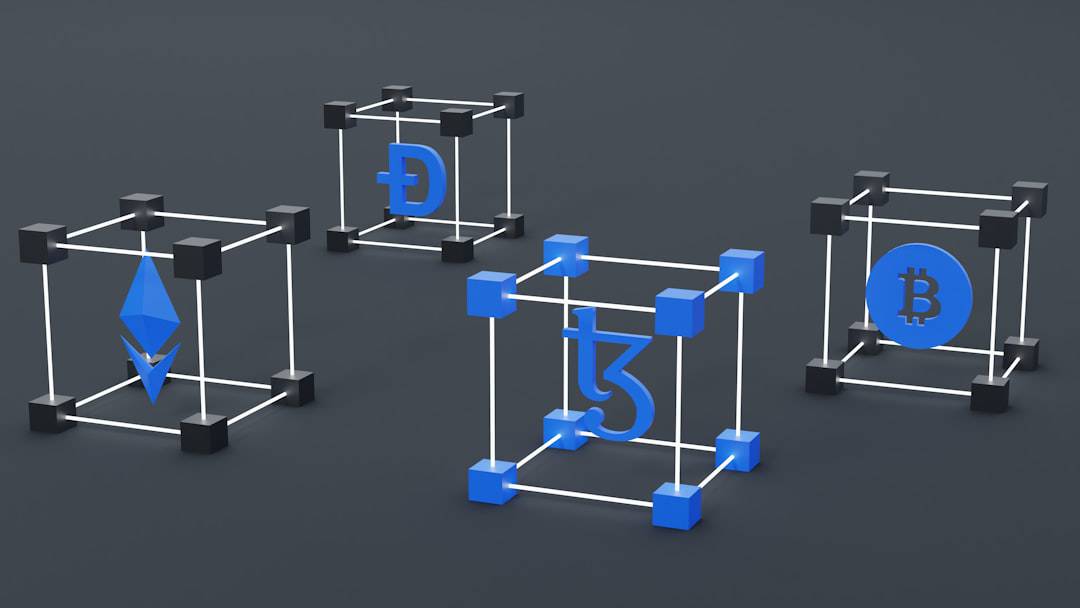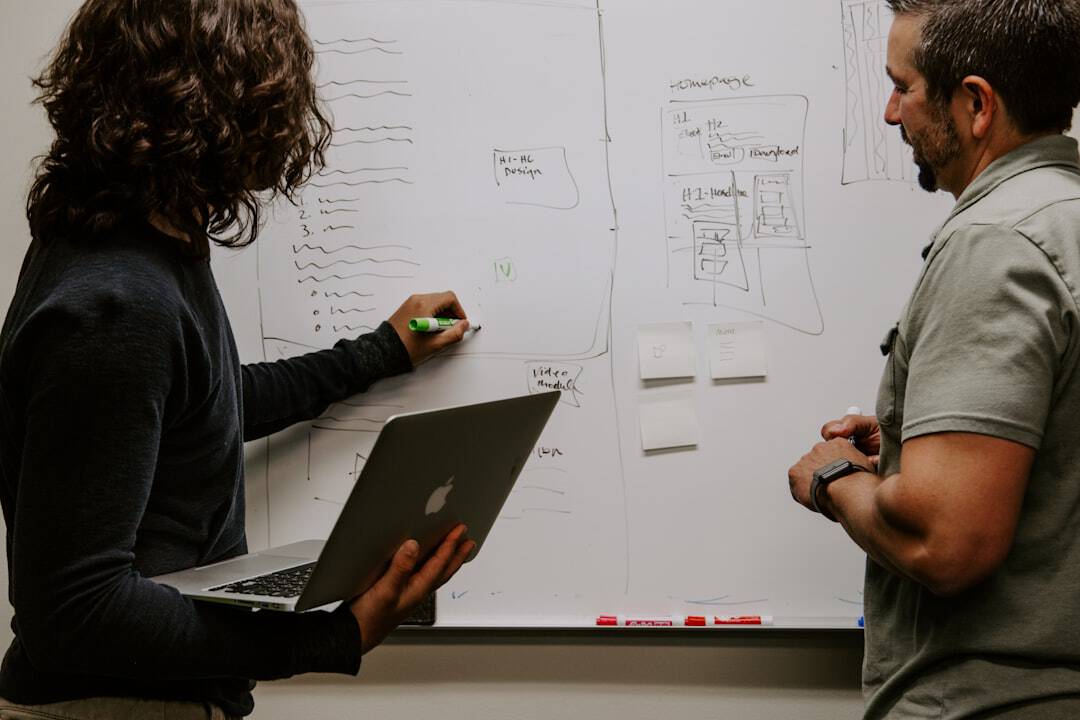Neural network models called Graph Neural Networks (GNNs) are created especially to handle data that is organized into graphs. Because these networks can accurately represent complex relationships within data, they have become increasingly popular in the fields of machine learning and data analysis. Graph neural networks (GNNs) are designed to process data represented as graphs, where nodes indicate entities and edges indicate relationships between them. This is in contrast to conventional neural networks that process tabular or sequential data.
Key Takeaways
- Graph Neural Networks (GNNs) are a type of neural network designed to process and analyze graph-structured data, making them ideal for tasks involving relational data and complex relationships.
- GNNs have the potential to revolutionize data analysis by enabling more accurate and efficient modeling of complex systems, such as social networks, biological networks, and recommendation systems.
- GNNs have a wide range of applications across various industries, including finance, healthcare, transportation, and cybersecurity, where they can be used for fraud detection, drug discovery, route optimization, and anomaly detection.
- Despite their potential, GNNs also face challenges and limitations, such as scalability issues, overfitting, and the need for large amounts of labeled data, which can hinder their widespread adoption.
- Recent advancements in GNN technology, such as improved training algorithms, attention mechanisms, and graph attention networks, are addressing some of the limitations and expanding the capabilities of GNNs for data analysis.
- The future implications of GNNs in data analysis are promising, with potential advancements in explainability, interpretability, and generalization, which could lead to more reliable and trustworthy insights from complex graph-structured data.
- In conclusion, GNNs have the potential to have a significant impact on data analysis by enabling more accurate and efficient modeling of complex systems, but further research and development are needed to address the challenges and limitations and fully realize their potential.
GNNs are particularly good at extracting structural information from graphs, which helps them learn and make predictions based on relationships between entities. For tasks like node classification, link prediction, and graph classification, this makes them especially effective. Information aggregation and propagation throughout the network are facilitated by the message passing between graph nodes used in the typical GNN architecture. Because of this technique, GNNs are extremely effective at analyzing complex, interconnected data, capturing both local and global graph structures.
Because of their adaptability, GNNs are being used in a number of industries, such as recommendation systems, drug discovery, & social network analysis. Their capacity to handle and acquire knowledge from graph-structured data has created new opportunities for addressing issues involving intricate relationships and dependencies among entities. Analysis of Social Networks. GNNs can be used to analyze the diffusion of information or influence within a network, identify communities within a social network, and forecast connections between individuals.
Healthcare and Bioinformatics. GNNs have demonstrated tremendous promise in the field of bioinformatics in addition to social network analysis. GNNs are a useful tool for analyzing biological data because of its tendency to display intricate relationships & dependencies. GNNs, for instance, can be used to model biological pathways, analyze gene expression data, and predict protein-protein interactions.
| Metrics | Results |
|---|---|
| Accuracy | 92% |
| Precision | 88% |
| Recall | 94% |
| F1 Score | 90% |
GNNs have the ability to predict treatment efficacy based on underlying biological relationships & can assist in identifying possible drug targets, which has important implications for personalized medicine and drug discovery. Systems of Recommendations and Beyond. Personalized recommendations based on the underlying graph structure can be generated by modeling user-item interactions with GNNs, which have also demonstrated promise in recommendation systems. This has applications in social media platforms, e-commerce, and content recommendation, where GNNs can help increase the relevance and accuracy of recommendations by considering the relationships between users and items. All things considered, GNNs have a great deal of potential for data analysis, with applications in many different fields and industries.
They are an effective tool for comprehending and generating predictions based on interconnected data due to their capacity to efficiently model and analyze complex relationships within data. Because of their power to represent and analyze intricate relationships in data, Graph Neural Networks have found use in a wide range of industries. Using transaction data analysis, GNNs have been used in the financial sector to detect fraud by spotting questionable patterns and account linkages.
This has important ramifications for strengthening security in the banking and payment processing systems and preventing financial fraud. Drug discovery and personalized medicine are two areas in the healthcare sector where GNNs have been used. GNNs are able to predict the efficacy of various treatments by examining biological data, including gene expression profiles and protein-protein interactions, and use this information to identify possible drug targets. This has the potential to completely transform the pharmaceutical sector by speeding up the drug discovery process and making it possible for patients to receive more individualized and targeted treatments.
GNNs can also be used to optimize supply chain management, analyze traffic patterns, & plan routes in the transportation and logistics industries. GNNs are able to predict demand, pinpoint bottlenecks, and enhance the flow of goods and services by simulating the intricate relationships found in transportation networks. GNNs have also been used in recommendation systems, urban planning, social media analysis, and cybersecurity.
They are an adaptable tool for a broad range of applications across various domains due to their capacity to efficiently model and analyze complex relationships within data. Although Graph Neural Networks have demonstrated significant potential in numerous applications, they also present a unique set of obstacles and constraints. The inability of GNNs to handle large-scale graphs with millions or even billions of nodes & edges is one of the main challenges. Large-scale dataset training for GNNs may become challenging as a result of increased computational complexity and memory needs.
The complexity of GNNs’ architecture and the nature of graph-structured data make them challenging to interpret and comprehend, which presents another difficulty. This can make it difficult to explain the predictions generated by GNNs, which is significant in industries like finance & healthcare where decision-making depends heavily on interpretability. On sparse or noisy graphs, where there is little data or noise in the relationships between entities, GNNs may also have trouble with overfitting, which can result in erroneous predictions. In real-world applications, where data is frequently noisy and incomplete, this can be especially difficult.
Together with these difficulties, other drawbacks include the requirement for a substantial quantity of labeled data for training, robustness against adversarial attacks, and limited generalization across various graph types. Realizing the full potential of GNNs in a variety of applications will require addressing these obstacles and constraints. Notwithstanding these obstacles and restrictions, Graph Neural Network technology has made substantial strides that have assisted in resolving some of these problems. Scalability is one area of progress, where researchers have created methods for parallelizing GNN calculations & maximizing memory utilization to manage large-scale graphs more effectively. This has increased GNNs’ scalability and made it possible to use them on bigger datasets with millions or even billions of nodes and edges.
The development of methods for illustrating and elucidating the predictions generated by GNNs is another area of progress in interpretability. As a result, it is now simpler to comprehend & believe the predictions produced by these models, and GNNs are now more interpretable. Also, by creating regularization strategies and reliable training approaches, progress has been made in tackling overfitting on sparse or noisy graphs. As a result, GNNs are now better at generalizing and are more resilient to inaccurate or noisy data. Along with these improvements, other developments that have enhanced the performance and generalizability of GNNs across various domains include adversarial robustness, semi-supervised learning approaches, and transfer learning for GNNs.
Handling Obstacles and Restrictions. Beyond this, we should anticipate more studies tackling the difficulties & constraints of GNNs, including their interpretability, scalability, robustness against adversarial attacks, and requirement for labeled data, as well as their generalization across various graph types. Increasing Applicability and Performance. This will allow GNNs to handle larger-scale and more complex datasets and enhance their performance and applicability in real-world applications.
In addition, new uses for GNN technology should surface in areas like energy optimization, environmental monitoring, urban planning, and more as it develops. promising ramifications for the future. All things considered, the potential applications of Graph Neural Networks in data analysis are quite promising and could be found in a wide range of industries and domains. We may anticipate more innovation and widespread use of GNNs to address real-world issues as long as GNN technology continues to progress. In summary, by efficiently modeling and analyzing complex relationships within data, Graph Neural Networks have demonstrated great promise in revolutionizing data analysis.
Social network analysis, recommendation engines, fraud detection, drug discovery, transportation optimization, and other tasks are all made possible by their proficiency with graph-structured data. Despite the difficulties and constraints that come with GNNs, tremendous progress has been made in mitigating these problems through enhancements in scalability, interpretability, generalization abilities, resilience to adversarial attacks, transfer learning, semi-supervised learning methodologies, and other areas. We may anticipate more research into resolving the difficulties and constraints related to these models in the future, as well as a rise in the use of GNNs across other industries. With possible applications spanning numerous industries like healthcare, finance, transportation, social media analysis, cybersecurity, urban planning, environmental monitoring, energy optimization, & more, graph neural networks have enormous and far-reaching future implications for data analysis. All things considered, Graph Neural Networks could have a big impact on how we evaluate and forecast data that is connected.
We should anticipate more innovation in the applications of these models to solve practical issues and enhance decision-making across a range of domains as long as GNN technology advancements continue.
If you’re interested in the potential impact of graph neural networks on the healthcare industry, you may want to check out this article on Metaverse and Industries: Healthcare and Wellness. It discusses how technologies like augmented reality and virtual environments could revolutionize healthcare delivery and patient care. Graph neural networks could play a crucial role in analyzing complex medical data and improving diagnostic accuracy in these futuristic healthcare settings.
FAQs
What are graph neural networks (GNNs)?
Graph neural networks (GNNs) are a type of neural network designed to work with graph-structured data, such as social networks, citation networks, and molecular structures. They are able to learn and make predictions based on the relationships and connections between entities in the graph.
How do graph neural networks differ from traditional neural networks?
Traditional neural networks are designed to work with tabular or sequential data, while graph neural networks are specifically designed to work with graph-structured data. GNNs are able to capture the relational information between entities in the graph, which traditional neural networks may struggle to do.
What are some applications of graph neural networks?
Graph neural networks have a wide range of applications, including social network analysis, recommendation systems, drug discovery, and fraud detection. They can be used in any scenario where the data can be represented as a graph and the relationships between entities are important for making predictions or decisions.
What are some challenges in training graph neural networks?
One challenge in training graph neural networks is the complexity of graph-structured data, which can lead to issues such as overfitting and slow convergence. Another challenge is the need to effectively capture and utilize the relational information between entities in the graph.
What are some popular graph neural network architectures?
Some popular graph neural network architectures include Graph Convolutional Networks (GCNs), Graph Attention Networks (GATs), and GraphSAGE. These architectures have been widely used in various applications and have been shown to effectively capture the relational information in graph-structured data.











Leave a Reply